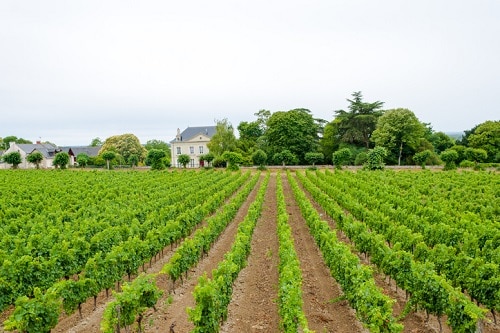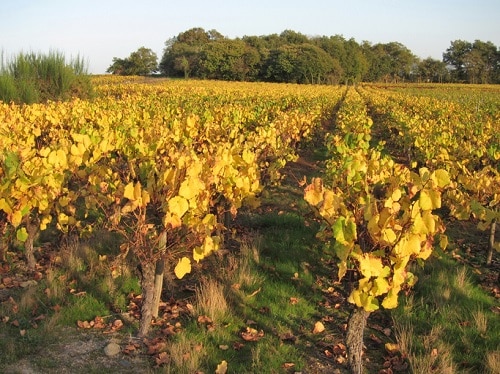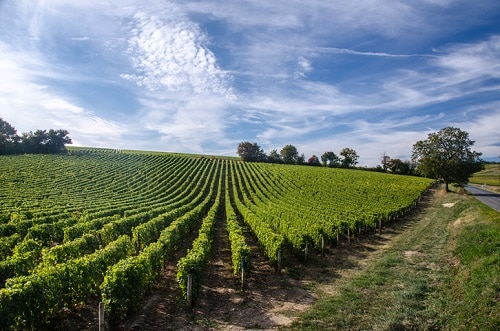Melon de Bourgogne Grape Variety & Wine Profile
Melon de Bourgogne is a white grape variety that is best known by the name of the wine it makes, Muscadet. It is primarily grown in the Pays Nantais region of the Loire Valley near the city of Nantes, France, though this is not where the grape originated. Its original home is in its namesake region of Bourgogne, or Burgundy. However, it was removed from this area in the 16th century in favor of other more prominent grape varieties.
Melon de Bourgogne, otherwise known as Melon, or Melon de B, found a home in the western edge of the Loire Valley near the Atlantic Ocean in two ways. Dutch distillers who used the port at Nantes as an entry and exit point to ship goods back to Holland brought the vines to the area in the 17th century because they needed wine for their brandy. The vines did well in the cool climate and were some of the only ones to survive an extremely harsh winter in 1709 when most other local red grape vines were destroyed. It was then that Melon de Bourgogne proved to be a sustainable grape for the region.
Terroir Talk
This grape does well in cooler climates because it is able to withstand frost better than other varieties. It grows best in schist and granitic soils. Besides the Pays Nantais region near the Atlantic Ocean on the western end of the Loire Valley, Melon has also found favor in the United States regions of the Willamette Valley in Oregon and Puget Sound in Washington State, both cooler regions. It was originally brought to the U.S. in 1939 by Georges de Latour and was incorrectly identified as Pinot Blanc by some in the original plantings and production. Now, it is primarily referred to as Melon, and U.S. federal law prohibits the use of the term “Muscadet” in labeling American-produced Melon de Bourgogne wines.
The Tasting Notes of Melon de Bourgogne
In the glass, Melon de Bourgogne produces light, crisp, dry white wines with aromas and flavors of lemon, lime, green apple, pear, and its signature salinity, especially in wines from the Loire Valley. Truly a wine that expresses its home, Muscadet wines have a distinct seaside minerality to their profile.
Though most Muscadet wines are made in a fresh style, some may be aged sur lie, meaning on the lees, for extra body and a bready, or yeasty flavor. Most wines made from Melon de Bourgogne, such as Muscadet, are meant to be drunk young, although in some cases, as in the sur lie-style wines, they can be aged for several years.
Food Pairings
Melon de Bourgogne wines, especially Muscadet, are well-known as perfect oyster-pairing wines. Muscadet with oysters is a world-famous combination. Think of Melon wines as the perfect accompaniment to lighter seafood dishes like ceviche, shrimp cocktail, or simply made lobster.
Learn About These Other Wine Grape Varieties
Written By Jacqueline Coleman
Jacqueline Coleman is a professional wine + travel writer, wine judge, columnist, and consultant based in Miami, FL.



